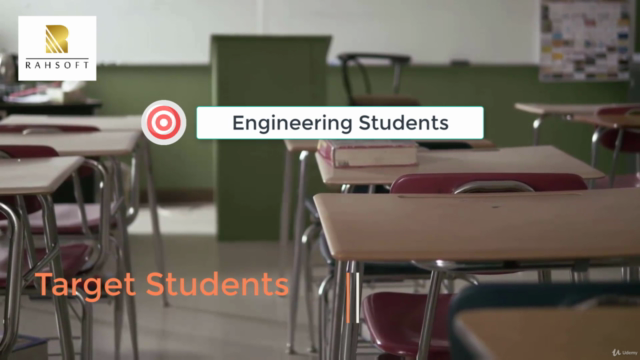Engineering Dynamics course & examples, 15+hours mechanical

Why take this course?
🎓 Course Title: Engineering Dynamics Course & Examples - Master the Motion in Mechanical, Civil, & Chemical Engineering
Headline: Become an Expert in Dynamic Analysis with Practical Examples for Engineers
Are you ready to dive into the world of Engineering Dynamics? If you're a second-year engineering student with a solid grasp of Statics and Mathematics, this course is your gateway to understanding the complex principles of motion in the real world. 🌐
Course Description:
Engineering dynamics is a cornerstone subject for many branches of engineering, including Mechanical, Civil, Aerospace, and Chemical. It's essential for understanding how forces influence objects in motion and how to predict their behavior under various conditions. This course at Rahsoft Mechanical Engineering Department is meticulously designed to provide a comprehensive understanding of dynamics from both theoretical and practical perspectives.
Why Take This Course?
- Foundation for Engineers: Strengthen your problem-solving abilities with real-world examples that apply to various engineering fields.
- Critical Skills: Develop the capacity to predict the effects of force and motion, which are crucial for creative design functions in engineering.
- Prerequisites: Ensure you have a strong foundation in Statics, Mathematics, Physics, and Graphics before diving into Dynamics.
- Enhanced Learning: This course is tailored to enhance your understanding of dynamics through both theoretical instruction and practical examples.
Course Content Breakdown:
Part 1: Dynamics of Particles
- Understanding forces on particles
- Linear momentum and its conservation
- Angular momentum and rotational motion analysis
Part 2: Rigid Body Dynamics
- Equations for rotational motion of rigid bodies
- Centroid dynamics and moments of inertia
- Analysis of complex systems using dynamic modeling
What You Will Learn:
- Theoretical Concepts: Gain a deep understanding of the principles of dynamics, including force systems, kinematics, kinetics, work-energy principles, and conservation laws.
- Real-World Applications: Apply your knowledge to solve engineering problems in various contexts, from mechanical systems to structural analyses.
- Practical Skills: Use computational tools and perform experiments to understand the dynamics of real-world scenarios.
- Problem-Solving Techniques: Develop the ability to tackle complex engineering problems using a systematic approach.
Course Outcomes:
- Expertise in Dynamics: Acquire expertise in the analysis and prediction of motion for various engineering applications.
- Enhanced Critical Thinking: Enhance your analytical skills through dynamic problem-solving activities.
- Broader Knowledge: Expand your understanding of mechanics to include civil, mechanical, and chemical engineering contexts.
Who Should Take This Course?
This course is designed for second-year engineering students who have already completed a solid foundation in Statics and Mathematics. It's perfect for:
- Mechanical Engineering Students
- Civil Engineering Students
- Chemical Engineering Students
- Any engineering student interested in expanding their knowledge of dynamics
Key Takeaways:
- Interdisciplinary Knowledge: Understand the common ground between different branches of engineering.
- Practical Application: Learn how to apply dynamic principles in real-world engineering scenarios.
- Advanced Problem Solving: Develop advanced problem-solving skills that are essential for a successful career in engineering.
Join us at Rahsoft Mechanical Engineering Department and transform your understanding of dynamics in engineering. Enroll now and take the first step towards becoming an expert in dynamic analysis! 🚀🔧✨
Keywords: Dynamic Mechanic, Dynamic Mechanical Engineering, Mechanical Dynamics Mechanics
Course Gallery




Loading charts...